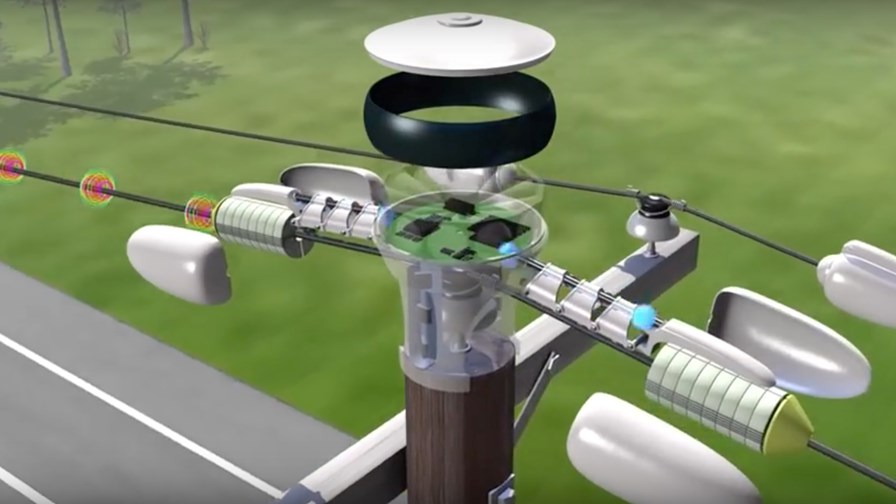
© AT&T
- Telco in “advanced discussions” with power companies
- Combines millimetre wave with broadband over power lines technology
- One trial will be in the US, one or more others overseas
- Solution promises to deliver broadband and cellular
AT&T has announced that it is in advanced discussions with power companies and others to trial its Project AirGig in at least two locations by this autumn. One location will be in the US with others to be determined in the coming months. AirGig is AT&T’s self-developed technology to deliver broadband over power lines (BPL), which it has been testing at its own outdoor facility for some time with “positive results”.
“We are looking forward to begin testing the possibilities of AT&T Labs’ invention for customers and utility companies,” said Andre Fuetsch, president of AT&T Labs and chief technology officer. “Project AirGig represents a key invention in our 5G evolution approach. AT&T Labs is ‘writing the textbook’ for a new technology approach that has the potential to deliver benefits to utility companies and bring this multi-gigabit, low-cost internet connectivity anywhere there are power lines – big urban market, small rural town, globally.”
According to AT&T, its engineers at AT&T Labs began work on BPL over ten years ago, but despite the technology apparently working well it couldn’t scale from megabits towards the gigabits now required. This resulted in a shift of development focus towards millimeter wave (mmW) technology, and then the idea came up of combining this with BPL.
As AT&T describes it: “Some of the first experiments involved transmitting data signals using funnels from a local auto parts store covered with aluminium foil, placed next to un-energised power cables. These tests produced unexpected positive results, creating the foundation of Project AirGig’s development – transporting mmWaves over powerlines.”
AT&T says it now has more than 200 patents and patent applications for Project AirGig, and that its engineers have invented low-cost plastic antennas, a Radio Distributed Antenna System (RDAS), mmW surface wave launchers and inductive power devices.
A typical Distributed Antenna System carries cellular signals throughout buildings and stadiums, using a combination of fibre and coaxial cables to transmit analogue signals. The new RDAS will be used to reconstruct signals for multi-gigabit mobile and fixed deployments, delivering broadband and cellular traffic. The mmW surface wave launchers and inductive power devices can power themselves without a direct electrical connection, creating a multi-gigabit signal that travels along or near the wire – but not through it.
So no need for new antenna sites or towers, and no need to dig underground conduits. As long as there’s over-ground power lines, AT&T says it can deliver its gigabit broadband and cellular service.
Not that this removes the need for small cells. AT&T still plans to test small cells on light posts and other infrastructure in the urban core of San Francisco, using a Centralised RAN (C-RAN) architecture to move the baseband functions to a single, central location. If this proves successful, the telco will replicated the approach in other cities to “densify” its network in preparation for SDN and 5G. Its acquisition of FiberTower and its associated mmW spectrum rights also plays into this plan.
AT&T promises that future field trials will demonstrate how Project AirGig works to support power companies’ smart grid technologies, such as meter, appliance and usage control systems and early detection of powerline integrity issues. The trials will also evaluate the technology during inclement weather, such as rain, snow and high winds. And of course, it will provide more precise cost estimates for future commercial deployment.
Email Newsletters
Sign up to receive TelecomTV's top news and videos, plus exclusive subscriber-only content direct to your inbox.




